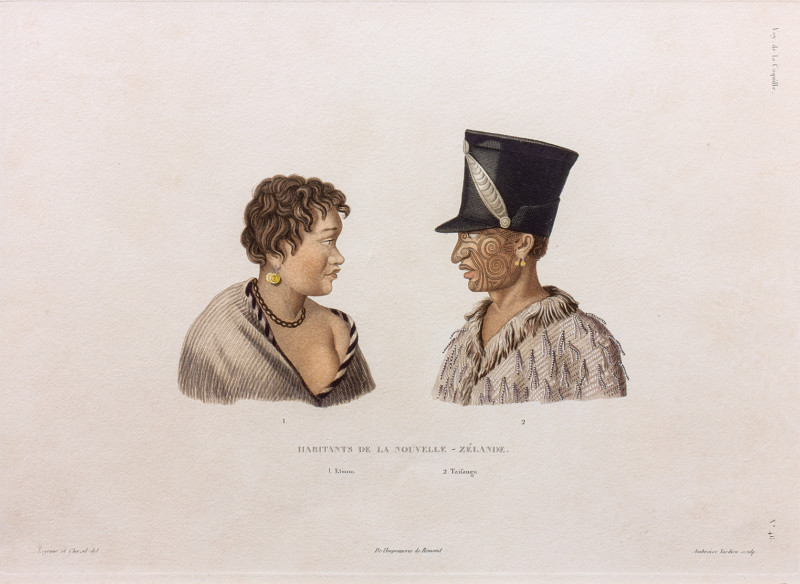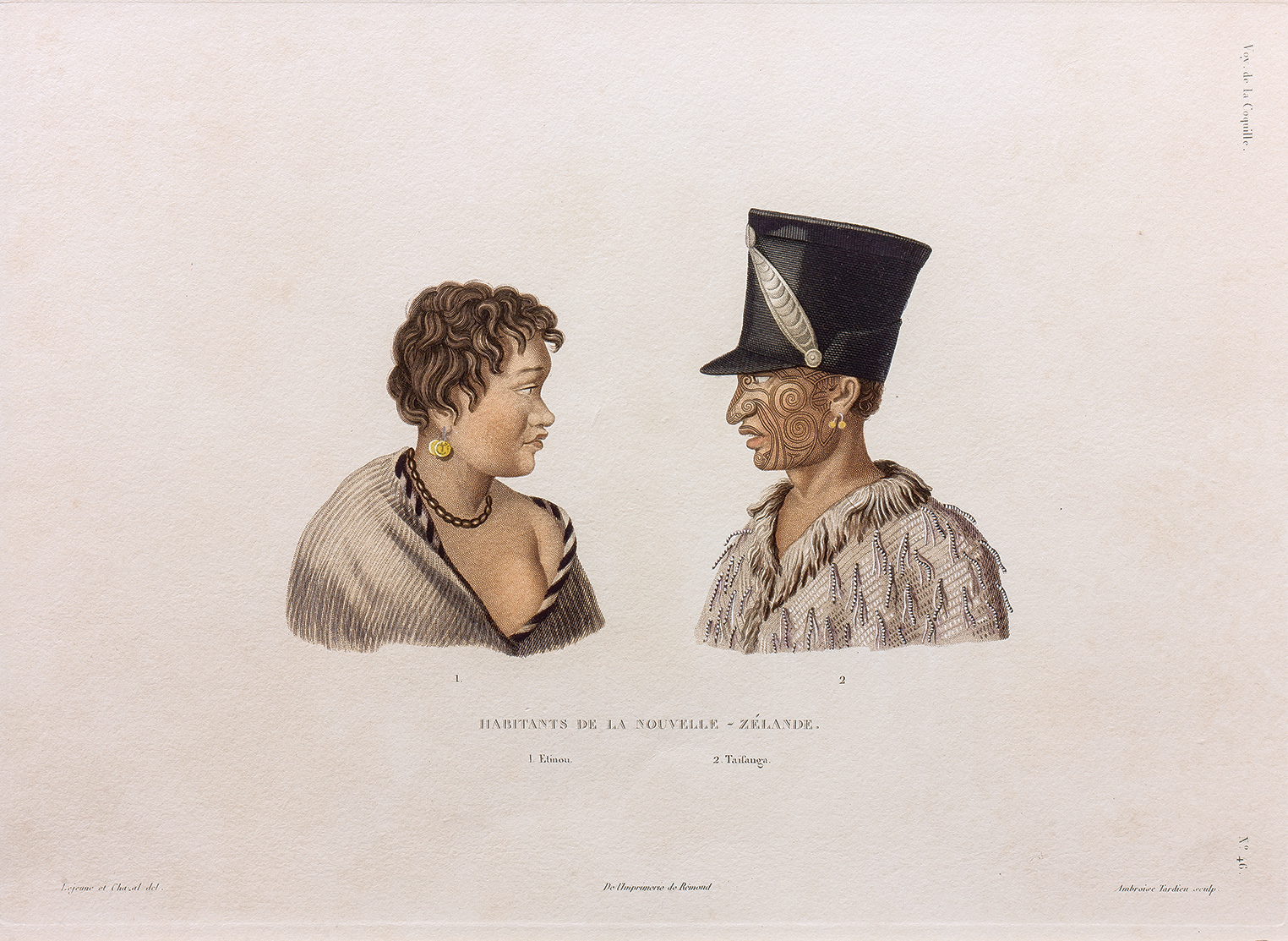LEJEUNE, Jules Louis; CHAZAL, Antoine;
Inhabitants of New Zealand: Etinou and Taiwhanga
1826
Hand-coloured engraving on paper
340 x 555mm

Original title: ‘Habitants de la Nouvelle-Zélande: 1. Etinou, 2. Taifanga’. Engraved by Ambroise Tardieu. Plate No. 46 from Louis Isidore Duperrey, Voyage autour du monde, exécuté par ordre du roi, sur la corvette de Sa Majesté, la Coquille, pendant les années 1822, 1823, 1824, et 1825 (Paris: Arthus Bertrand, 1826). Other lithographs from the series can be viewed here.
The following text comes from the catalogue for the exhibition Tirohanga Whānui.
Here Chazal has combined two of Lejeune’s originally separate images. Etinou wears two gold coins as an earring. In the original watercolour, she is shown with scars on her shoulder and chest, probably from inflicting herself with wounds with a shell during mourning. Judging by an inscription of Lejeune’s, Etinou appears to have been a girl known to the crew as Nanette. This is corroborated by Lesson who wrote in his journal: ‘One of the young girls, called Nanette by the sailors, who was noted for her constant gaiety and vivacity, was the boldest of all and the least hesitant about plunging into the water.’
Taiwhanga, a Ngāpuhi chief from Kaikohe, and the missionary Thomas Clarke were passengers on board the Coquille on its voyage from Port Jackson (Sydney). In Lejeune’s original watercolour he is wearing an army great coat and there is a feather attached to the crown of his helmet.
Lesson relates that, when the ship first dropped anchor behind Moturua on 3 April 1824 (a location soon changed to Paroa Bay on Tuai‘s advice), the alarmed Taiwhanga kept on shouting, ‘Danger! Shipwreck!’ at the sight of such a large vessel resting calmly in ten fathoms over a bottom of sandy silt.
The Coquille was immediately ‘invaded by wave upon wave of Islanders’. According to d’Urville, having been away from home for fifteen to eighteen months, Taiwhanga was overcome at the sight of his parents and friends. ‘I should try in vain to describe the proofs of affection and sensitiveness which this poor lad gave on this occasion. For more than an hour his heart was bursting with emotion and tears of tenderness flowed from his eyes.’
In January 1838, the missionary Rev. R. Wade stayed a night at Taiwhanga’s home. By that time, this former warrior alongside Hongi (Wade refers to him as being ‘among the foremost of the bloodthirsty’) had been baptized, taking the name of Rāwiri, or David, and was a consistent Christian.
Exhibition History
Tirohanga Whānui: Views from the Past, Te Kōngahu Museum of Waitangi, 15 April to 15 September 2017

